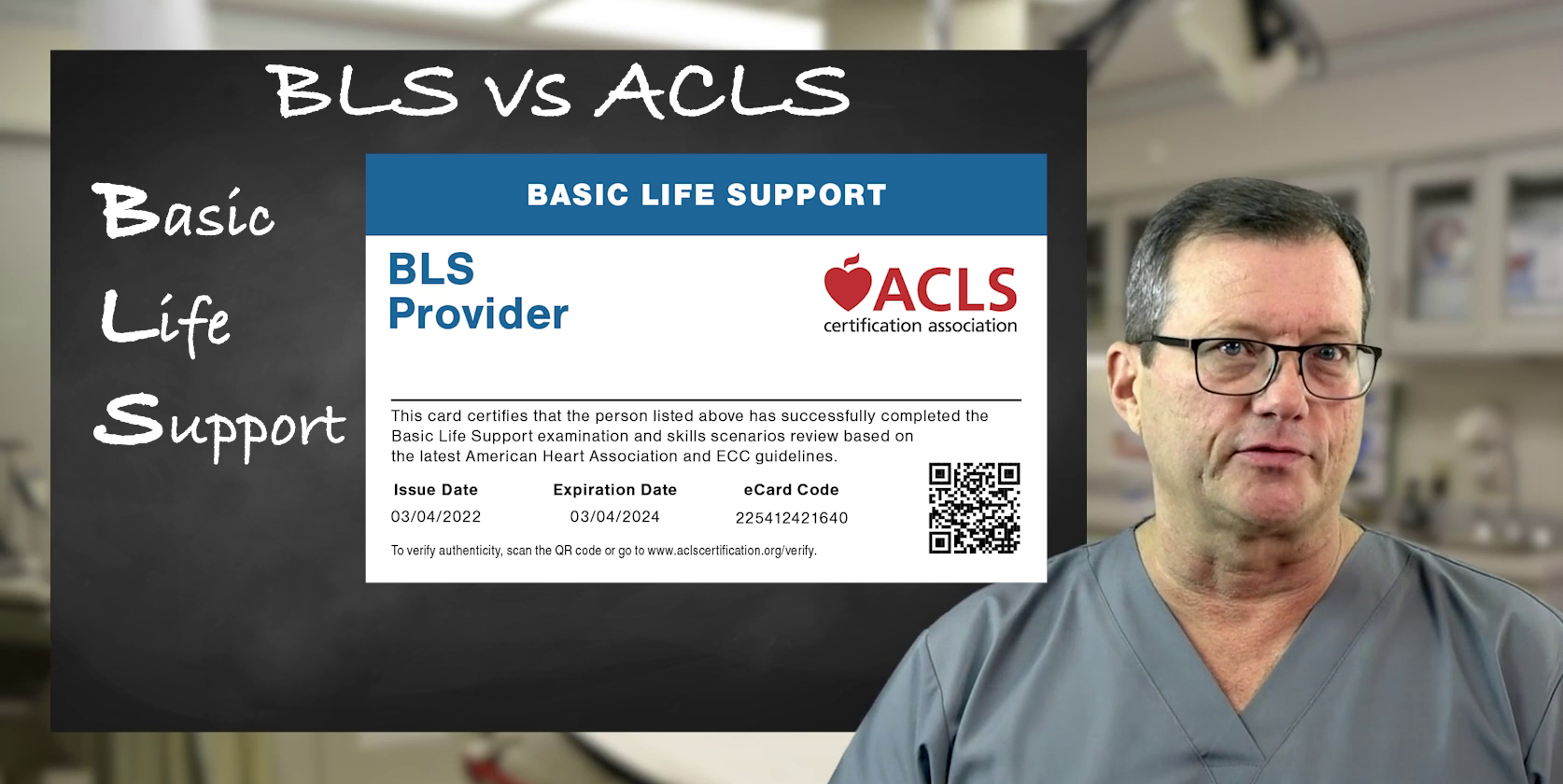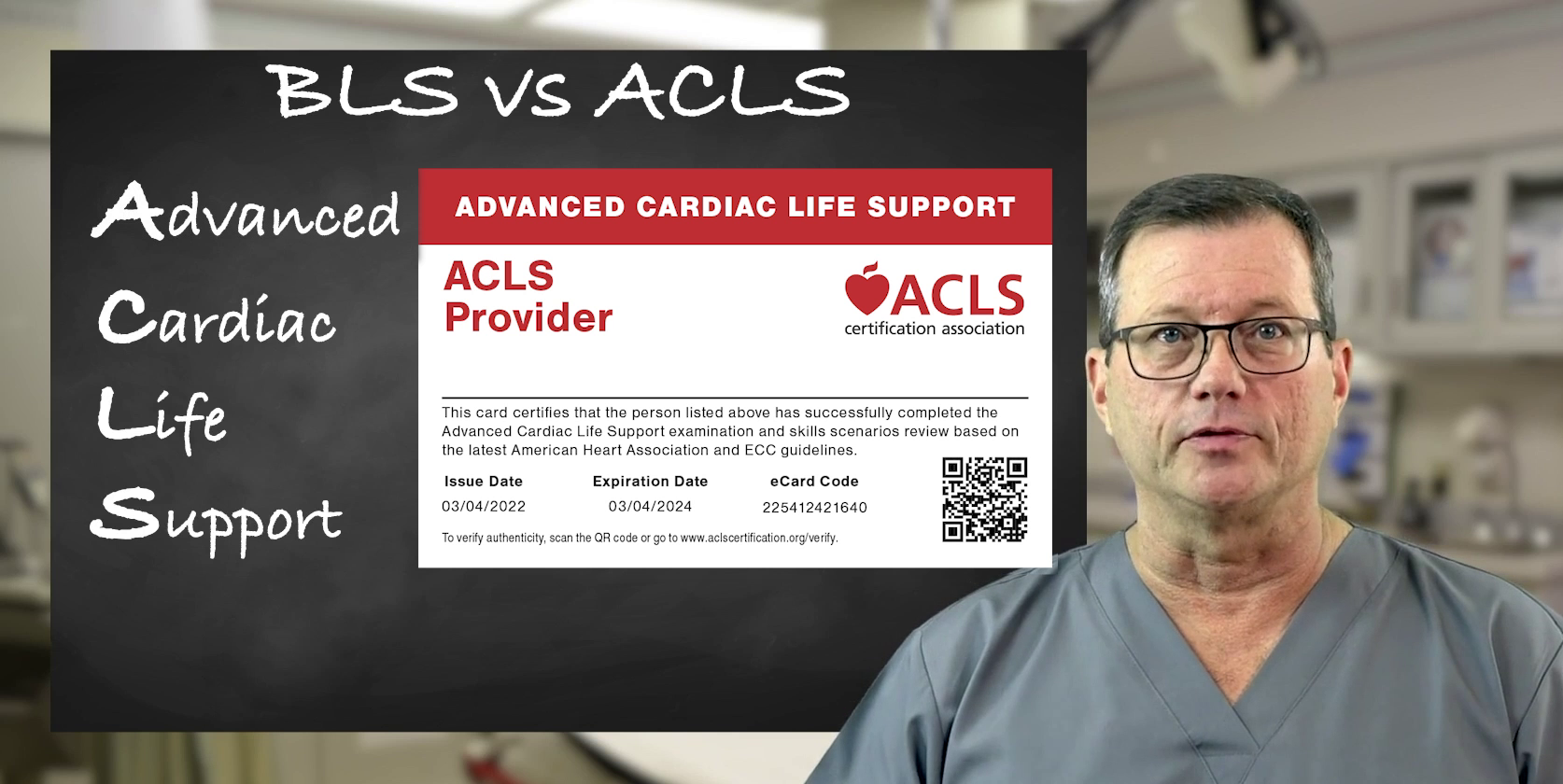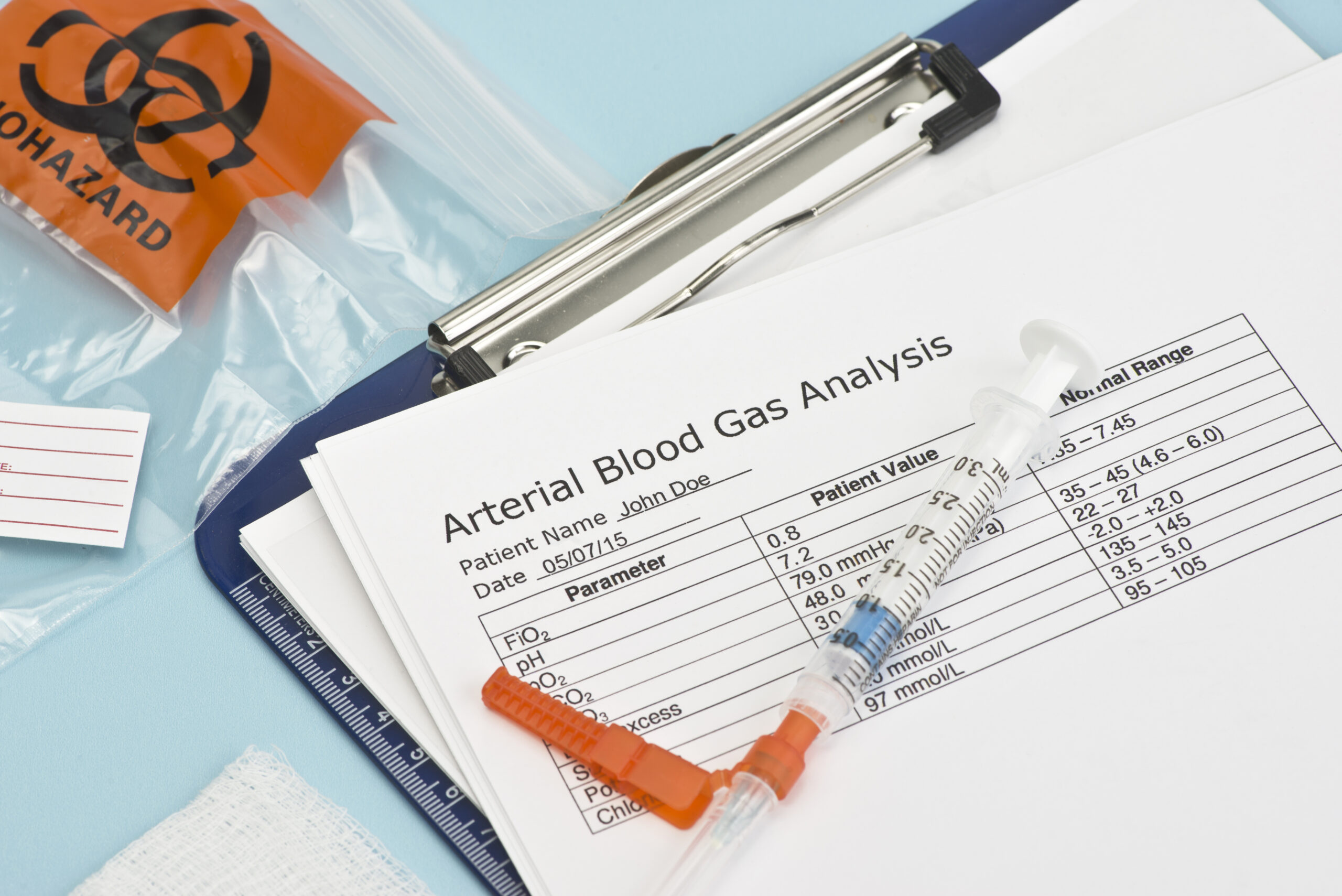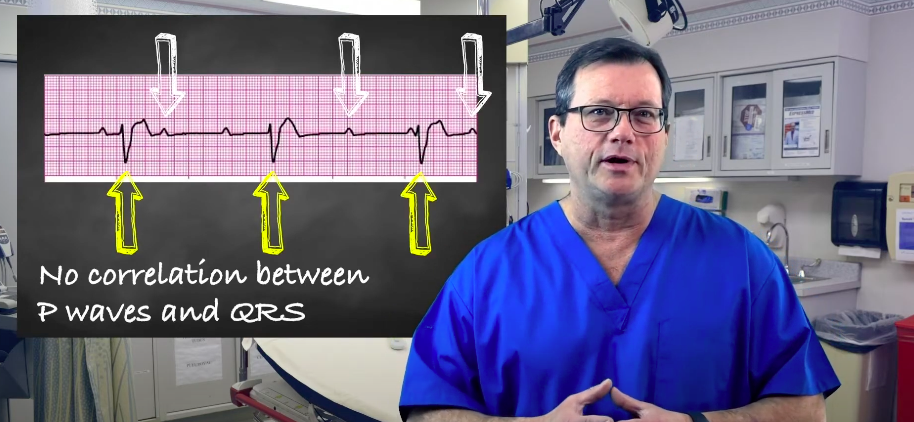Difference Between ACLS and BLS
ACLS Certification Association videos have been peer-reviewed for medical accuracy by the ACA medical review board.
Article at a Glance
- BLS stands for Basic Life Support, using CPR as the primary treatment.
- ACLS stands for Advanced Cardiac Life Support. It is for healthcare providers using advanced techniques and treatments.
- The foundation for ACLS is high-quality BLS.BLS stands for Basic Life Support, using CPR as the primary treatment.
- ACLS stands for Advanced Cardiac Life Support. It is for healthcare providers using advanced techniques and treatments.
- The foundation for ACLS is high-quality BLS.
BLS stands for basic life support. These are basic life-saving skills and BLS classes vary based on experience levels from a lay person all the way up to a licensed professional. When determining AF, you’ll first notice a lack of a P wave. During atrial fibrillation, the atrial chambers are firing from multiple foci. The firing is quick, random, and chaotic, frequently occurring at a rate of 300–350 bpm with no discernible P-wave on an ECG tracing. BLS stands for Basic Life Support. ACLS stands for advanced cardiac life support, and it’s more in depth than BLS. ACLS is intended for licensed providers, paramedics, nurses, physicians, and other health providers. ACLS training covers advanced topics like electrocardiogram (ECG) interpretation, drug administration, and electrical therapy. But always remember, without adequate BLS, ACLS isn’t going to help. BLS is the first line of defense. Read: Criteria for a SVT (supraventricular tachycardia) ACLS stands for Advanced Cardiac Life Support. The class is more in-depth than a BLS class. If the ventricular rate is less than 100 bpm, it’s a controlled atrial fibrillation. If the ventricular rate is greater than 100 bpm, it’s an uncontrolled atrial fibrillation or atrial fibrillation with rapid ventricular response (RVR).What is the Difference between BLS and ACLS?
Related Video – Basic Life Support for Healthcare Providers


Summary
BLS stands for Basic Life Support and includes basic CPR measures plus more. It’s taught to lay people and medical professionals.
ACLS stands for Advanced Cardiac Life Support and includes more advanced skills such as ECG interpretation. The ACLS class is more in-depth than the BLS class and intended for medical professionals.
More Free Resources to Keep You at Your Best
Editorial Note
ACLS Certification Association (ACA) uses only high-quality medical resources and peer-reviewed studies to support the facts within our articles. Explore our editorial process to learn how our content reflects clinical accuracy and the latest best practices in medicine. As an ACA Authorized Training Center, all content is reviewed for medical accuracy by the ACA Medical Review Board.

